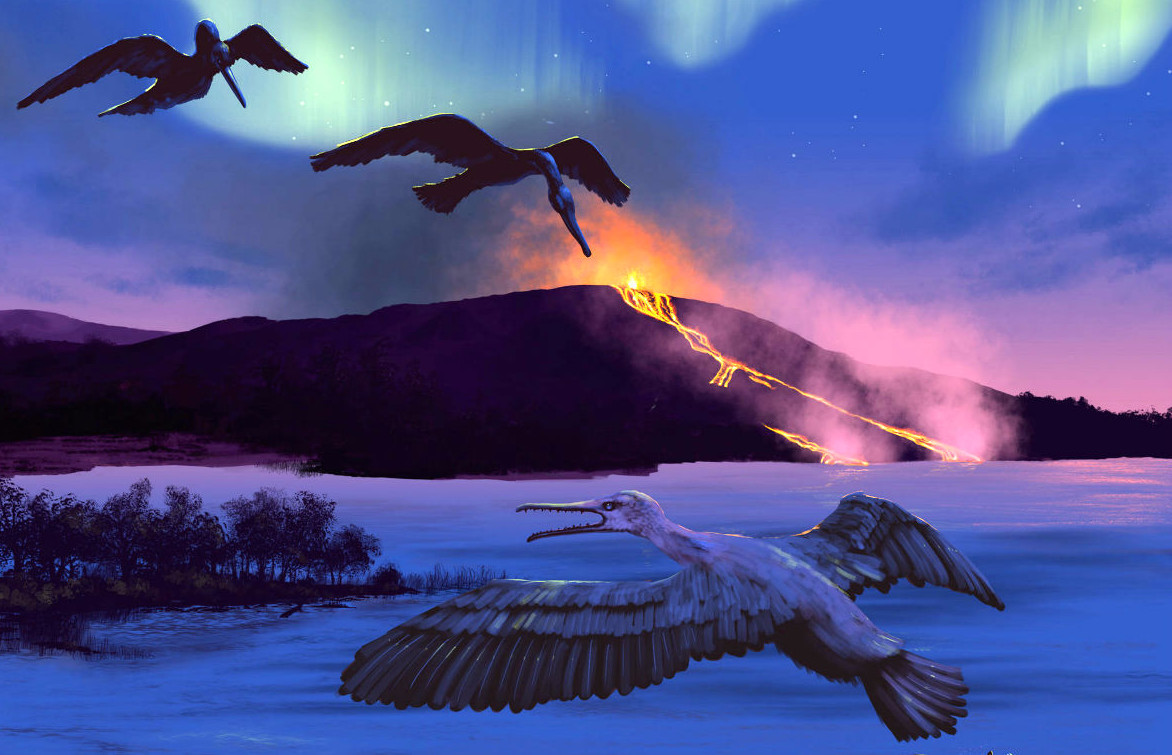Bird fossils 90 million years help predict the future of the Earth
Scientists discovered the 90-million-year-old fossil of a new winged bird over a meter long and sharp teeth in Canada's Arctic region.
A group of geologists from the University of Rochester, USA discovered the 90-million-year-old fossil of a new bird in Canada's Arctic region, Business Insider reported Dec. 24. The bird named Tingmiatornis arctica is one of the oldest birds ever discovered in the northern hemisphere.
Tingmiatornis arctica's bones show that it looks like a hybrid between a gull and a cormorant with wingspan of more than a meter. In addition, the bird has sharp teeth and features that enable it to dive underwater.

The 90-million-year-old bird fossil is found in the Canadian Arctic.(Photo: Michael Osadciw).
The Tingmiatornis arctica fossil was discovered on a strip of lava formed after many volcanic eruptions. Volcanoes spray carbon dioxide into the Earth's atmosphere, causing a greenhouse effect that warms the climate, creating conditions for birds to thrive.
"Ecological factors such as food sources, freshwater environments and warm climates have turned this area into a wonderful habitat for Tingmiatornis arctica," said John Tarduno, Dean of the Department of Environmental Science and Earth. University of Rochester, explained.
The new bird helps to create a clearer picture of the ecosystem that existed 93.9-89.8 million years ago in the Canadian Arctic region. It is very different from today's Arctic temperature.
"Fossils show us the world scene when there is no ice in the Arctic," said Richard Bono, a PhD student at the University of Rochester School of Environmental and Earth Sciences.
This finding will provide more information about global warming that happened then, as well as forecasts about the future of climate change on Earth.
- China found 7 million years old bird fossils
- The giant bird once dominated the Antarctic sky 50 million years ago
- Fossilized birds discovered 30 million years ago
- Prophetic fate of the Earth in the future
- The most intact bird fossil in amber 99 million years
- Found fossils of ancient birds after dinosaurs extinction
- Australia found fossils tens of millions of years old
- Prehistoric stone models help predict future climate
- Video: Predict the face of the Earth after 250 million years
- Amazing predictions will happen in the next 10,000 years
- The discovery of animal fossils dating to 42 million years in Brazil
- Amazingly discovered about the 100 million-year-old bird in amber
 Discovered an ancient centipede fossil 99 million years old
Discovered an ancient centipede fossil 99 million years old Discovered bat-like dinosaurs in China
Discovered bat-like dinosaurs in China Discovered a 200-year-old bronze cannon of the coast
Discovered a 200-year-old bronze cannon of the coast Discover 305 million-year-old spider fossils
Discover 305 million-year-old spider fossils